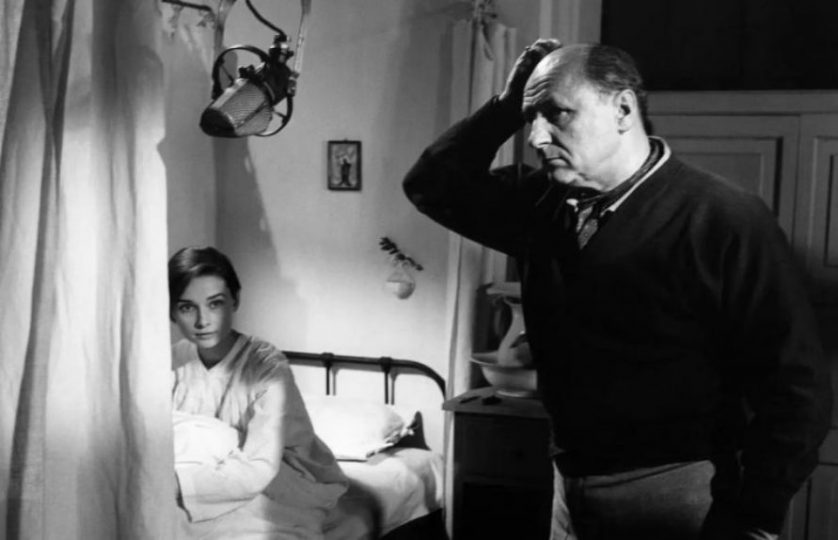The style of American post-war cinema was markedly influenced by documentaries and Italian neorealist films. But it wasn’t an entirely new aesthetics. It was merely an amplification of European visual tradition which found its way to Hollywood with cinematographers like Karl Freund, Rudolph Maté and Franz Planer.
The last of the aforementioned cinematographers, who cooperated with the German master of lively melodramas Max Ophüls on both sides of the Atlantic, never achieved such renown as his colleagues despite being nominated for an Oscar five times and receiving three Golden Globes. But the main reason we mention him is different: Franz Planer was born in Bohemia as František Plánička.
As the place where he was born on 29 March 1894, Plánička stated Karlovy Vary. But his family originated from Ústí nad Labem, where he spent his childhood. His mother had a hat shop on what is today the Mírové square in Ústí nad Labem. Other members of his wealthy family also had a lot of influence and fortune as they owned various companies, properties, lands and supposedly also libraries in the former Austria-Hungary.
Plánička’s education predestined him to be a portraitist, but he turned his attention to the increasingly popular photography. He began his career in 1910 after finishing his training in photography in Vienna. In the same decade, he also began to work as a cinematographer on a weekly newsreel. First in Vienna, later in Paris.
The first feature film that Plánička shot, already under his German pseudonym Franz Planer, was the adaptation of Ludwig Ganghofer’s novel Storms in May (Gewitter im Mai, 1919). In the following decade, he established himself as a sought-after cinematographer working for the Munich-based film production company Emelka Studios, where he made advertisements and live-action films. He worked on films such as The Favourite of the Queen (Der Favorit der Königin, 1922), Hunted Men (Gehetzte Menschen, 1924) and Women on the Edge (Frauen am Abgrund, 1929). But he didn’t renounce his homeland, and in 1923 married in Cirkvice near Kutná Hora.
From the films which Planer filmed in Germany, the most successful were sound comedies and melodramas from the early 1930s, such as The Three from the Filling Station (Die Drei von der Tankstelle, 1930), The Countess of Monte Christo (Die Gräfin von Monte-Christo, 1932) and A City Upside Down (Eine Stadt steht kopf, 1933).
Just like other liberal-minded artists, Planer decided to leave Germany after the Nazis rose to power. At first, he relocated to Austria and later worked in France and Great Britain. But, fearing for his life as well as the life of his Jewish wife, he decided to leave Europe for good. In 1937, he settled in the United States where he lived until his death in 1963. To better fit in to the new cultural and language environment, he once again changed his name: to Frank Planer.
After signing a contract with Columbia Pictures, where he worked until 1945, he began working with prominent Hollywood filmmakers. His style was influenced by German expressionism and in some cases, he attracted attention to himself by downright experimental methods that appeared only sporadically in the post-war American cinema (for example, the realistic drama Decision Before Dawn, 1951, filmed entirely on location; and the phantasmagorical musical The 5000 Fingers of Dr. T., 1953, making unique use of coloured lighting).
At the same time, Planer didn’t have a problem with conforming to the requirements of prominent directors such as George Cukor (Holiday, 1938), Stanley Kramer (The Pride and the Passion, 1957), William Wyler (The Big Country, 1958) and John Huston (The Unforgiven, 1960). But most of the aforementioned filmmakers met him halfway in his preference of unusually long wide shots with high depth of field, which conveyed meaning through framing and situating actors in space.
With the increasing popularity of noir films after the Second World War, the studios were much more inclined to allow their filmmakers to shoot on locations, and Planer seized this opportunity very enthusiastically, as can be seen in the noir thriller Criss Cross (1949) filmed in the streets of Los Angeles. Whenever possible, Planer always preferred authentic interiors and exteriors to filming in studios. It gave his films the qualities of documentaries.
Prior to shooting, Planer often took part in location scouting, and already during the pre-production stage influenced the visual style of the film – something he was used to from Germany, where a meticulous planning of each shot usually preceded the shooting itself.
Although Planer influenced his collaborators mainly thanks to his low-budget films in which he emphasised realism, his most popular films are the star-studded romantic comedies Roman Holiday (1953) and Breakfast at Tiffany’s (1961) and the drama The Nun’s Story (1959). All three films starred Audrey Hepbrun, who allegedly had full confidence in Planer and his work with lighting with regards to how she looked on screen. When Planer was replaced byHenri Alekanduring the filming of Roman Holiday because of disagreements with the director, Hepburn probably wasn’t very pleased.
Planer’s considerable role in creating intricate special effects for the adventure film 20,000 Leagues Under the Sea (1954) based on Jules Verne’s novel, and the technicolour military drama The Caine Mutiny (1954), also attracted much-deserved attention.
During his life, František Plánička, or Franz/Frank Planer made over 100 films. He unfortunately didn’t live to see his last film, the remake of My Favorite Wife (1940). The leading role was given to Marilyn Monroe, but the studio had to terminate her contract because the production was disrupted by her personal troubles. She was offered to return, but two months after the production was suspended, she was found dead in her bedroom.
The 40-minute-long fragment of the unfinished film Something’s Got to Give (1962) is therefore a testament to two prominent Hollywood artists, an actress and a cinematographer.

